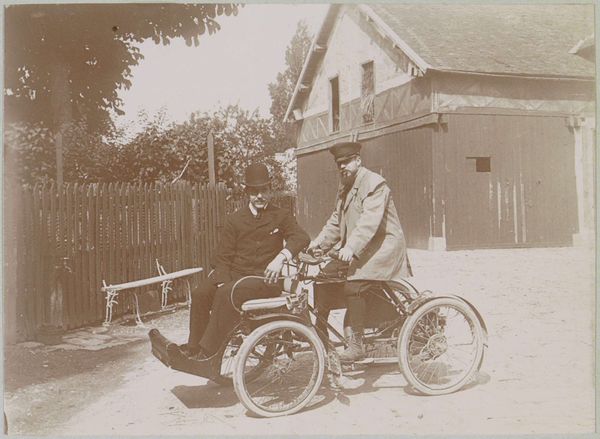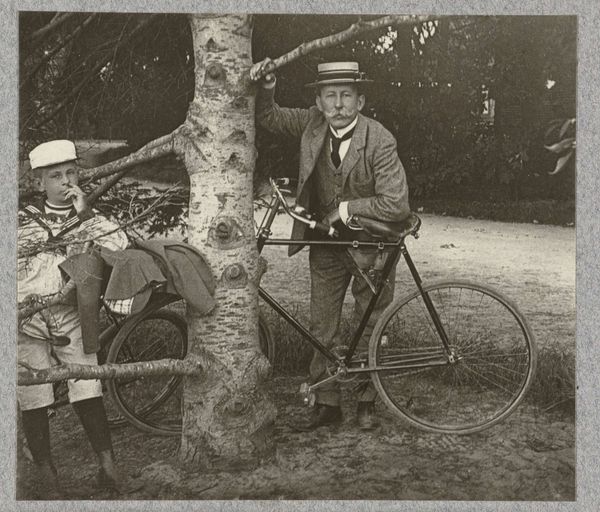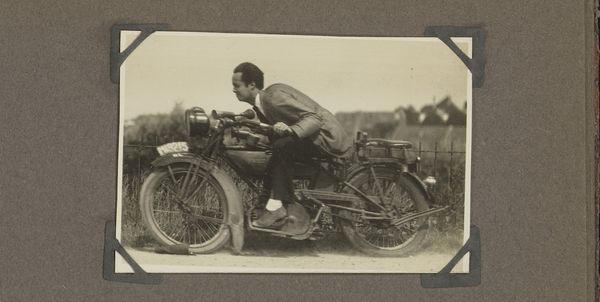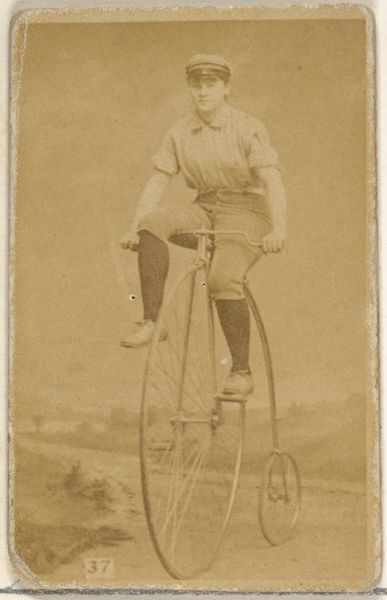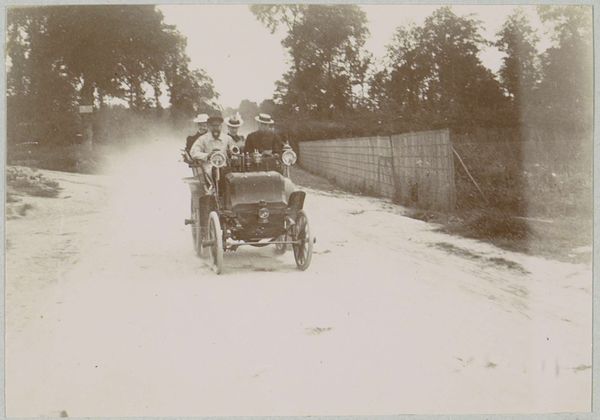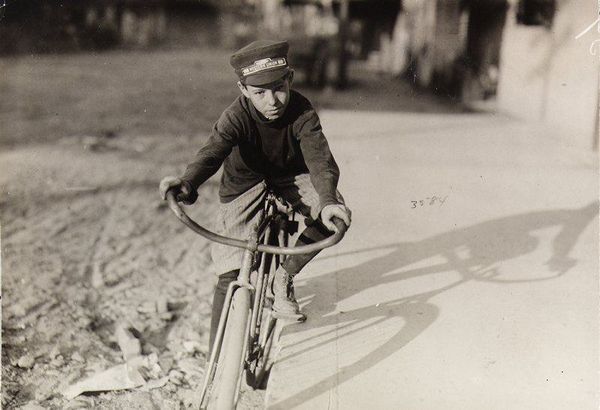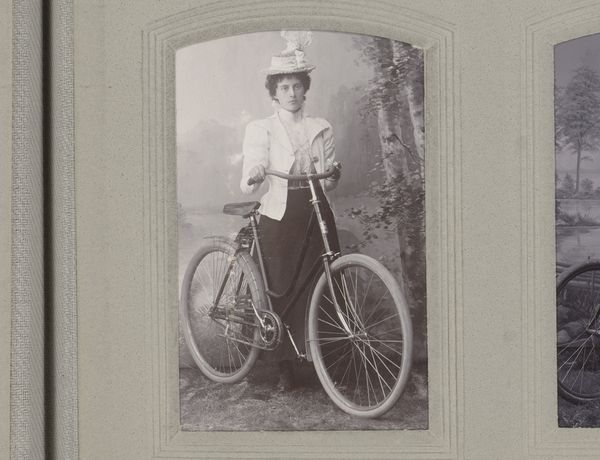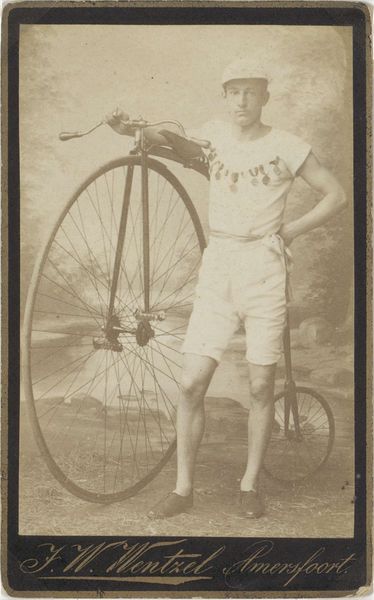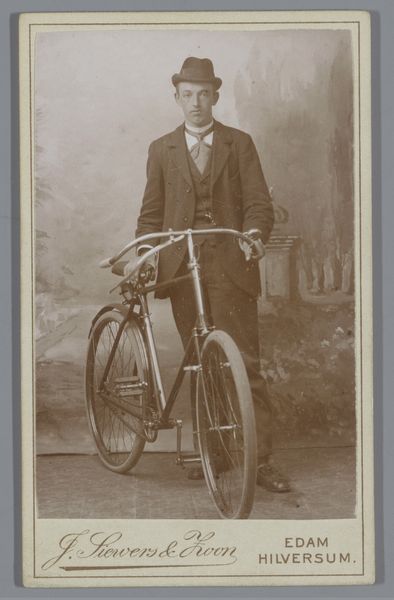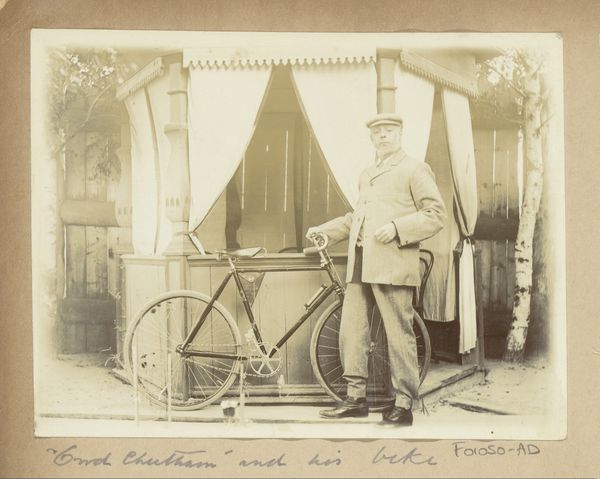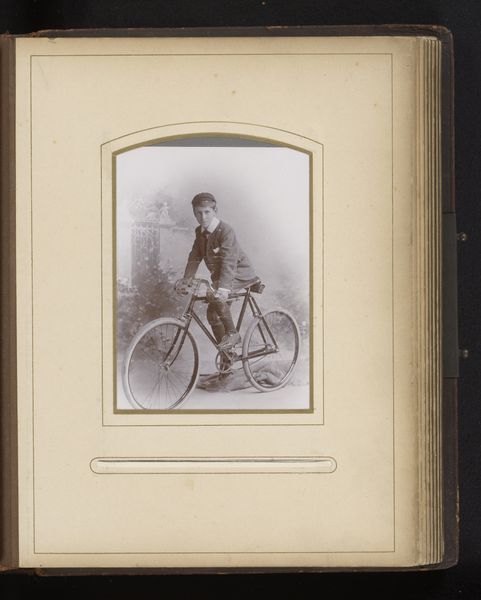
Twee jongens met fietsen, vermoedelijk Hans en Georges Bergsma op Sumatra 1926
0:00
0:00
anonymous
Rijksmuseum
photography
#
portrait
#
photography
#
historical photography
#
historical fashion
#
couple photography
#
group-portraits
#
genre-painting
#
modernism
Dimensions: height 90 mm, width 118 mm
Copyright: Rijks Museum: Open Domain
Curator: This photograph, titled "Twee jongens met fietsen, vermoedelijk Hans en Georges Bergsma op Sumatra," taken around 1926, offers a glimpse into a specific historical and cultural moment. It’s currently part of the Rijksmuseum collection. Editor: It has a striking stillness, doesn't it? The tonal range is very limited, drawing my eye immediately to the textures of the gravel path and the dull shine of the bicycle frames. You can almost feel the humidity in the air. Curator: Absolutely. Consider the historical context. We see these two boys, likely the sons of Dutch colonizers in Sumatra, posing with their bicycles. The photograph speaks volumes about Dutch colonial society and the experience of childhood within that structure. Note the formal composition for what seems like an intimate family photo. Editor: It is clearly staged. How do the materials and production affect that staged element? Was this image mass produced, perhaps becoming a popular form of representation that enforced a certain vision of Dutch colonial life? Curator: It likely existed as a private, circulated object meant to reinforce ideas of Dutch cultural and technological advancement but that, importantly, still served an immediate use within the private Bergsma family. The material object as a cultural ambassador if you will. Editor: That reading of material elevates the status, doesn't it? While "historical fashion" might suggest superficial trends, clothing actually becomes central to marking social hierarchies. The contrast with the unseen Indonesian laborers on whose backs this leisure depends is palpable. Curator: Precisely. And the very act of photography—its increasing accessibility—democratizes the medium somewhat, even within the confines of this privileged social stratum. More families were now able to record these images, making a historical study like this all the more relevant in what it might reveal collectively about the politics of domestic representation. Editor: I find the photograph somewhat melancholy now, acknowledging the unseen labor that provided the context for even this small photograph to have been created. The bicycles, beyond being just bicycles, are also indicators of progress and of colonial dominance. Curator: I agree. Studying the image as an artifact underscores how objects mediate larger historical narratives. Seeing this portrait reveals volumes.
Comments
No comments
Be the first to comment and join the conversation on the ultimate creative platform.

